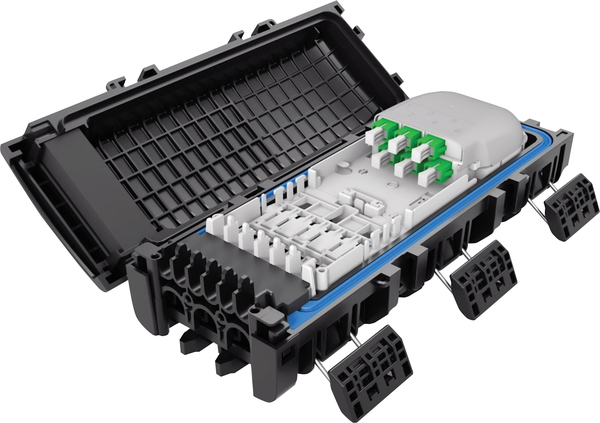
A 2020 study by the National Association of Counties (NACo) estimated that 65-percent of US counties have average connection speeds lower than the FCC’s definition of broadband. And the lack of accessible and affordable high-speed broadband is global. According to Internet World Stats, 42 percent of the world was yet to be connected to any type of broadband, as of mid-2019.
Surprisingly, the key to solving this deficit—on a global scale—could be a small, overlooked component in fiber network deployments: gel sealing technology.
Connecting the next billion
Building out the infrastructure to connect a majority of the world’s population will involve a massive amount of new fiber. A Deloitte Consulting analysis estimates that the United States will requires an investment of $130–$150 billion in fiber infrastructure over the next five to seven years to adequately support broadband competition, rural coverage, and wireless densification.
The focus on connecting un-served and underserved areas and preparing for fiber-dense applications means significant changes in the outside plant. New topologies, such as distributed access architectures and fiber indexing drop strategies, are leading to increases in deployment and application diversity. But at the same time, the labor pool of skilled fiber technicians able to execute these new strategies is drying up. The bottom line is that building a fiber broadband backbone for a 21st century requires more than addressing the “what”—operators must tackle the “how.”
The key is splicing
As operators plan their fiber networks of the future, they’re contending with the following questions: How do they roll out more infrastructure faster and more reliably? How can they ensure it is agile and easily expandable and upgradable? How do they make it easier to repair when needed?
Wherever fibers need to be aggregated, branched or accessed in the outside plant, fiber splice closures are used to house and protect the splices and manage fiber cables. As networks extend farther out in the last mile, they require a great deal of flexibility and accessibility to connect to homes, buildings, wireless base stations, and other nodes. These slice points must support a significant number of fiber connections, access points, and flexibility nodes and allow operators to test and diagnose their networks and make frequent alterations. The design of the fiber splice closure and the way it is sealed has the power to revolutionize the extensibility of this vital connection in the network.
How gel unlocks growth
As global operators push fiber deeper, and the performance of fiber technology grows increasingly sensitive to splice closure contamination, reliable cold sealing technology is becoming a crucial focal point of new deployments.
Until very recently, there were three main types of seal technologies applied in harsh environments: heat shrink, rubber seals (or grommets), and thermoplastic elastomer (TPE) gel. Each of these has distinct trade-offs, but their ultimate goal is to allow multiple wiring configurations, enable repeated entry, as simply as possible, while providing a robust, reliable seal. Also, because of restrictions around the use of heat—for example, heat shrink applied with a torch—near utility infrastructure, as well the cost and training associated with these hot applied sealing methods, cold sealing technologies are the preferred method to enable broader deployments.
In 2020, CommScope material scientists developed a fourth technology—silicone gel—that adds critical capabilities and performance features unavailable with the previous three. CommScope is offering this gel sealing system compound under the brand name Octopus Gel™. It’s even more conformable and resilient than TPE, which allows a single seal to cover a wider diameter range of cables.
The new technology also addresses an important challenge for installers and network operators: installation expertise. Traditional rubber and some TPE gel sealing systems rely on an installer’s experience to achieve the right amount of compression—closing gaps to cover extremes of the cable diameter range—to create barriers for minimizing sealant exposure against aggressive media when activating the seal. The process adds time to the installation and maintenance process, but more importantly requires specialized personnel training to ensure it’s done correctly. With the Octopus Gel sealing system, the sealant by itself acts as a barrier to fluid (aggressive) media and the system embeds features to control the compression and unwanted gaps.
The result is a highly-reliable, easier-to-install closure that is reusable and re-enterable. It can be deployed throughout the feeder/distribution and drop network and can accommodate a wide variety of cable sizes and jacket thicknesses. The design also makes it suitable for aerial, ground level and below-grade applications.
With spliced network connections around the world set to skyrocket, this new gel sealing technology will not only simplify and accelerate new fiber installation and maintenance, but allow global operators to do so without specialized personnel training.
Today, there are more sealing options than ever, and each has an important role to play in safeguarding the entire network. For more information on Octopus Gel and other modern sealing solutions for fiber growth, please visit here.












